Packed away your shorts yet? It’s almost time. Winter is coming with its annual reminder that for year-round comfort, Irish homes really aren’t up to scratch.
Most of our houses are not that cosy. About 78 per cent of them have a BER energy rating of C2 or worse. Long dark nights are part of winter living here, but cold rooms, big heating bills and jumpers really don’t have to be. Owners of new homes built since 2011 already know this – Ireland has consistently ranked in the first three in the world for energy efficiency in this category. The problem is the two million homes built when standards were lower.
A house that’s never warm for long is a bit dispiriting. A Government with climate targets is having sleepless nights about them too. Retrofitting is part of the answer. This means updating your house from one that’s draughty and expensive to heat to one that’s warmer, and more energy and cost-efficient. So whatever your home, how can you bring it back to the future, and how much will it cost?
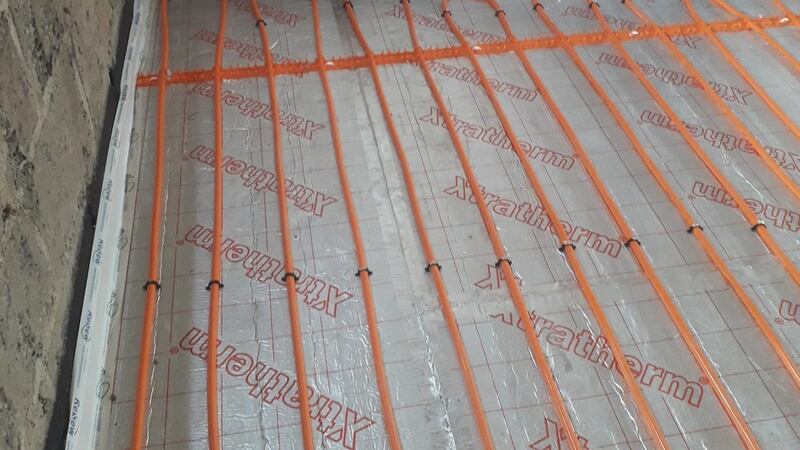
No matter what era or type your house, the first step is to engage with a Sustainable Energy Authority of Ireland (SEAI) registered Building Energy Rating (BER) assessor. They will tell you where your home lies on an A-G scale, with A being the most energy efficient. You'll also get a roadmap of what's required to bring your home up to a B2 rating or better, setting out the most impactful upgrades as well as the cost.
It’s a three-step approach, says the SEAI.
“Address the heat loss with insulation, improve the energy efficiency of heating and ventilation and add renewable technologies such as solar thermal or photovoltaic [PV].”
The first step is always stopping heat loss.
“A home can lose up to 30 per cent of its heat through poorly insulated roofs and walls and a further 10 per cent through poorly performing windows, doors and uninsulated floors,” says the SEAI.
Proper insulation will increase comfort and reduce bills and, once complete, installing an electrical heat pump will add more comfort. An alternative to oil and gas boilers, a heat pump draws heat from a lower temperature outside source like the air or the ground to heat your home. The Government is hot on them too, with a Climate Action Plan goal to install 600,000 of them by 2030. The installation of oil boilers is banned in new homes from 2022, and of gas boilers from 2025.
If you don't want to mess with the decor however, external wall insulation will be less disruptive
If your home is a semi-d from the 1970s, you’ll know all about the cold. Like any good 1970s horror show, the trouble is what lies beneath. Or rather what doesn’t. With most of these houses built using hollow block, there really isn’t enough of a buffer between you and the elements.
“They have no insulation which is a problem for retaining heat,” says David Flannery, a retrofit adviser with Electric Ireland SuperHomes. Homeowners sometimes plug the large ventilation cavities; the trouble then is too little ventilation, leading to black mould and condensation in corners, around windows, behind wardrobes and beds.
“You get a very cold house that is just not breathing properly,” says Flannery. Whack on the heat of course, but as soon as it’s turned off, the house gets cold again.
“All the heat escapes. You need the heat on constantly to achieve any warmth. It’s just very wasteful,” he says. “You are losing a lot of money and it’s so demoralising.”
Draughts through old doors, windows and suspended floors add to the battle. A first step is wall insulation. If you are doing up the house anyway, stripping out the kitchen and wardrobes, internal wall insulation can work well. If you don’t want to mess with the decor however, external wall insulation will be less disruptive. Durable polystyrene insulation boards in 100mm or 150mm widths are attached to the exterior and rendered over. If you have pebbledash, this is smoothed first.
The attic should be done in tandem.
“Insulating the attic is actually the cheapest solution per euro spent,” says Flannery. The standard now is a 300mm layer with a mineral wool or sheep’s wool an option. “So long as the U value [a measure of heat loss] is good and it’s certified, that’s all that matters,” he says.
While you can improve energy efficiency step by step over time, if budget allows, it’s ideal to look at the whole house as a system, including heat loss through windows and doors too. The last thing to look at is the floor. Concrete floors, common in this era of house, are expensive to address but suspended floors can be taken up with insulation put between the joists to stop draughts.
The result of all these works will be a far more comfortable home.
“A typical 1970s or 1980s house is going to be somewhere between a D and an E energy rating,” says Flannery. “You can bring that up to a B2 or better with these measures.”
The cost, including new windows, will range from €50,000 to €80,000, inclusive of about €20,000 in grants, he says. If you’ve had the windows done more recently, that cost will come down.
If it’s brass monkeys in your period terrace, there’s a lot you can do. Such homes are typically red brick with suspended floors with often a more recent flat roof extension out the back. Internal wall installation is a good place to start – external insulation covering the red brick won’t be a runner. The good news in a terrace is you won’t have to do every wall with two walls at most in each room being external.
Any coving will have to be removed however, says Flannery. It can be put back up of course, but often brittle, this could be risky and will come at a cost. Up in the attic, any new insulation must allow the timbers to breathe, so a registered installer will add vents to avoid rot.
In the war on cold in a period home, the door is a big target. Anything that’s not made of composite, particularly timber, will warp over time, leaking heat. “That breeze coming in is going to be like a Hoover, sucking the heat out,” says Flannery. Though period purists may wince, new composite doors and windows now closely mimic period originals and perform far better. To get your period terrace up to heat pump standard with windows, doors, floors, attic, ventilation and air tightness all addressed, expect to spend €80,000-€90,000, with €20,000 coming from grants.
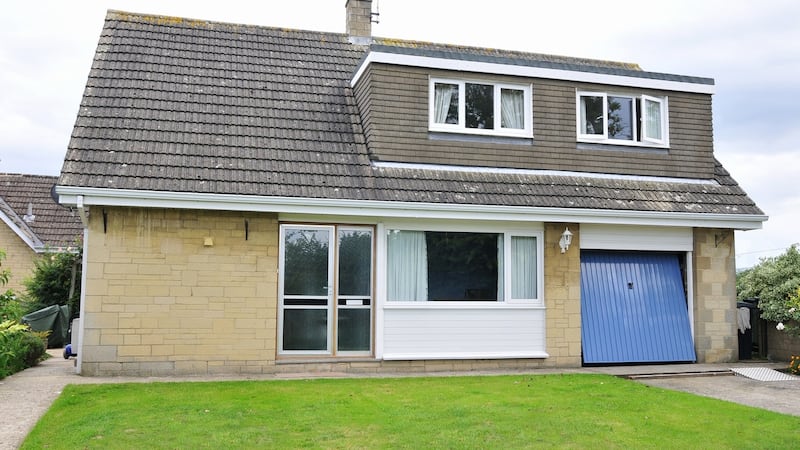
For cost-effective heat retention in a detached bungalow, go into the attic. If it’s not too full of old school books, you could head up and roll out some insulation yourself. A registered installer, however, can put in the necessary vents. “This solution including grants could be anywhere between €3,000 and €5,000,” says Flannery.
A detached bungalow has exposed walls on all sides of course, so get some protection in there too. There might be polystyrene boards already in there, an assessment will tell you whether there is room to pump the gap with insulating material. If the gap isn’t big enough, external wall insulation is an option. If the original 1980s or 1990s windows are still in place, the U value is likely to be quite poor, says Flannery. Windows upgraded in the past 10-20 years can probably be retained.
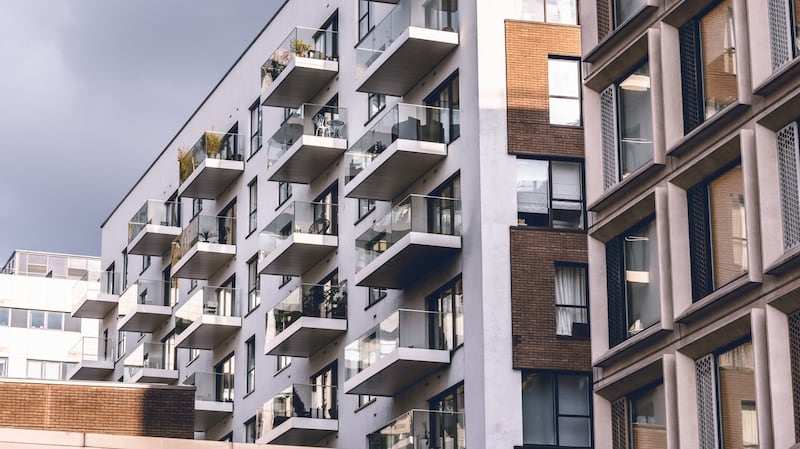
If you live in an apartment, it’s likely to have a better BER rating than other dwellings.
“Anything built from the 1990s onwards will have a reasonable amount of insulation,” says Flannery. Again a survey will tell you what works, if any, need doing. “You might be in a zone that’s warm with lots of heat going on. It depends on how the apartment is located and the square metres to be insulated. It might make a lot of sense to do it if the cost is low,” he says.
If you don't want to go the whole hog, there are grants for part upgrades to
Putting insulation board on the internal side of exposed walls with a skim over them will cost in the region of €8,000-€10,000, says Flannery. Swapping out windows and doors will be trickier in a managed development where maintenance of these is controlled centrally. Tightening hinges and replacing seals on doors and windows is something anyone can do and this will make a big difference to air tightness. Installing a heat pump in an apartment can be problematic however, unless you have permission to put it on a balcony or outside a ground-floor apartment. Things are changing however, says Flannery.
“We are certainly seeing where there are stable owner occupiers in apartments, they are starting to look at doing things together as a group.”
For homes built and occupied before 2006, SEAI grants are available for insulation and heating controls and before 2011, for the installation of renewable energy like a heat pump. Your house must have an existing BER of C2 or lower and upgrades must bring it up to B2 or more. SEAI’s One Stop Shop service is for homeowners wanting multiple energy upgrades and it includes a home energy assessment, grant application, project management, contractor works and a follow-up BER. The grant will cover about a third of the cost for a typical family home. If you don’t want to go the whole hog, there are grants for part upgrades too. Upgrades for homeowners on qualifying benefits such as the One-Parent and Working Family payment, Domiciliary Care Allowance and Carers Allowance are fully funded.
Architect Sarah Cassidy and her family bought their 1960s four-bed semi in Terenure in 2004. The house was well located, compact and light-filled, but with draughty windows and doors, ventilation holes and minimal attic insulation, it wasn't exactly cosy. With a young family, major upgrades had to wait. "We could do nothing about them; we just didn't have the budget at the time." The eventual need for more space set things in train. An energy retrofit was part of the solution.


SuperHomes applied for SEAI grant funding on Cassidy’s behalf, which was secured in 2019 prior to works commencing. The energy upgrade of the existing house was partially covered by grant funding, but not the new-build extension.
Completing the project, although extremely challenging, was about providing a comfortable and safe place filled with good light and space for our family to thrive
Cassidy says she took a “whole house, fabric first” approach and was also influenced by the passive house ethos. A first step was using external wall insulation to wrap the whole house.
“We went down 300mm too to ensure we were covering off any draughts. You need that to ensure you are eliminating cold bridges.”
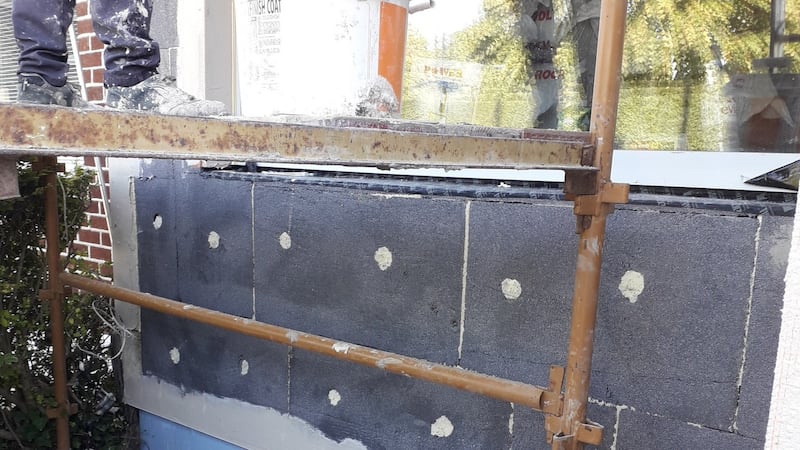
In addition, cavity walls were filled with bead insulation. Up in the attic, it was about good insulation, wrapped continuously, she says. New windows, doors and roof lights were all triple glazed. This was instrumental in reducing noise from a busy road too. A heat pump replaced gas-fired central heating with under-floor heating installed downstairs. Photovoltaic panels on the roof, converting sunlight into energy, further minimised dependence on the grid. Excess energy is stored in a battery for evening use.
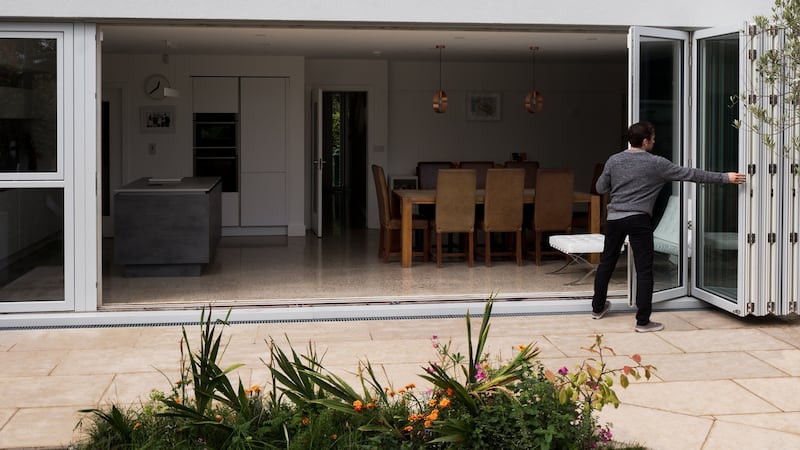
Going airtight brought some design dilemmas. Sealing two open fireplaces while retaining the chimneybreasts for structural reasons meant re-orientating furniture and artwork in rooms where the hearth was no longer a central focus. Rather than break air tightness with a letterbox in the door, Cassidy discovered a standalone post box at Architectural Salvage, painting it post-box green.
The big wins were “comfort and air quality”, says Cassidy.
“We moved back in before Covid and lockdown and it made a huge difference.” The house, originally BER E2 is now A1 with an ambient year-around temperature of about 20 degrees.
“The project inception was collaborative with my husband, John, who died in 2018 after a long illness,” says Cassidy. “While he was instrumental driving it forward, he unfortunately didn’t get to see the completed works – I know he would have loved it.”
“Completing the project, although extremely challenging, was about providing a comfortable and safe place filled with good light and space for our family to thrive.”


















